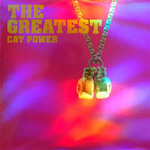This review page is supported in part by the sponsors whose ad banners are displayed below |
 |
 |
To begin with the stocker, I must admit that it countered blasé audiophile condemnation quite effectively not by doling out high-end qualities left and right but by readjusting my expectations of "now the work begins"—you know, note book in hand to itemize everything the AT95 would leave under the table (heady check list listening in other words)—only to wonder 45 minutes later why I had so much fun. The first album in question was 1989’s Acid Jazz compilation Totally Wired II.
To apply the boring check list to Steve White and Gary Wallis’ "Nzuri Beat" drum & percussion solo number, it’s musically limited of course but a good measure on space (centrally compacted or wide open and deeply layered), timing and—since there’s tons of clangy brass—-treble resolution. The latter was clearly limited.
|
|
|
The AT needle blurred nuances and even transients were softer than sharply honed. But tonally I found little fault. The upper range was neither attenuated nor highlighted and properly integrated. It simply broke no microdynamic records. Body of cymbals and their size came off very well however. You might know extremely airy, finessed spiderwebby cymbals that seem to be all decay to undermine the reality of quite sizeable metal discs which are hit before they fade out. Here the stock TD309 was far more realistic. Soundstaging was quite broad too but front-to-back layering wasn’t that keen.
"Nzuri Beat" on this sampler is exceptionally spare of course. All other cuts are rather more densely packed to cover the midrange with piano, guitar, trumpet and occasionally nicely randy tenor and soprano sax while upright and e-bass add a lot more action in the lower registers. The Thorens in particular got the midrange right. It was nicely substantial without getting thick or too warm and had bite on brass instruments but no hyper presence. Other presentations are crisper and clearly more aggressive. ‘Substantial’ applied also to the bassment, sounding more juicy than dry and gnarled. Brisk e-bass interludes like the solo on the Ed Jones Quartet’s "Homegrown" track were tracked clearly without missing anything and double-bass runs too were very nicely grippy. Still, the Audio Technica missed some bass heft and mass.
|
|
|
To conclude first impressions, treble and mids were nicely balanced and texturally more fulsome than crisp, with bass matching them in juice and shape. Only the sub bass was mostly hinted at. If not perfectly neutral, to my ears this was a harmoniously level presentation. Yet tonal merits were only half the reason why I got along so well with the TF309 straight out of the box. The other half became clear with musically more contrasted material.
|
 |
Theory & practice: While the Acid Jazz Totally Wired compilation’s tie-in with dance music celebrated verve, rhythm and drive, the same is clearly less true for songstresses like Ricky Lee Jones, Cat Power or Françoiz Breut. Instrumentation gets sparser and occasionally outright stark. Now individual instruments weigh in more when the listener’s focus isn’t distracted by opulent orchestrations. With Cat Powers’ melancholy vocalizing, one simply hopes to retrieve the last bit of minutiae from the groove since it’s all the more about atmosphere than raw drive.
|
|
|
|
|
In my book such music depends on resolving power to properly draw out the finest of microdynamic shadings. If little happens on stage, I want to know even more where exactly the tiniest of bells goes off. All that the AT pickup resolved quite nicely, considering its budget sticker surprisingly so. But in the end I wasn’t completely sold or drawn into the right vibe. That’d be asking too much for 30 euros too.
What this interlude was about was showing how the stock Thorens excels at PraT and medium to macro dynamics. Its involving character did well with Rock, Pop, (Acid) Jazz and any music living on propulsion to have one forget about silly bean counting à la ultra resolution, microdynamics and lit-up holographic staging. More important was lively swing where the Thorens truly impressed. Naturally when swing subsides, the beans begin to grow again. C’est la vie. But as delivered, the Thorens was a very attractive surprise. To get even more meant just a few small changes.
|
 |
  |
 |
|